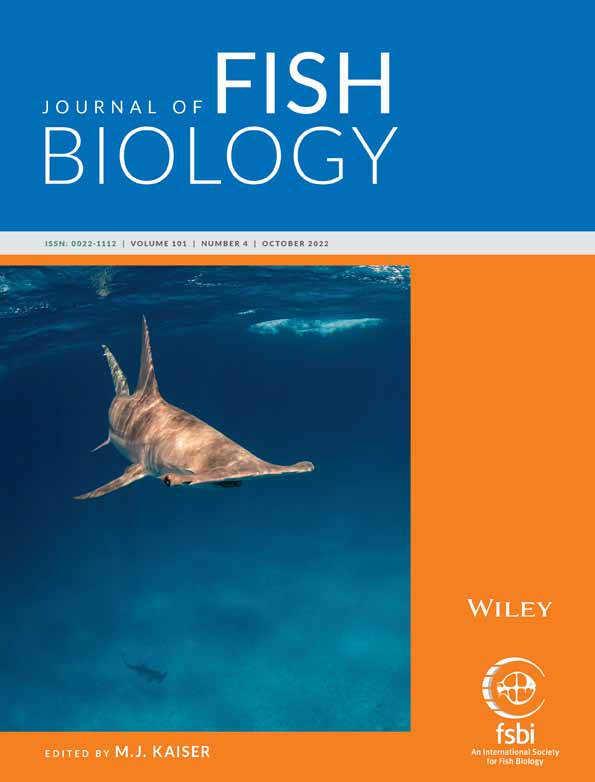Surfing the tide: homeward migration of sea trout (Salmo trutta) in a Patagonian river
Fecha
2022-06-23Autor
Giese, Adriana Carolina
García Asorey, Martín Ignacio
Casalinuovo, Miguel Ángel
Amaya Santi, María Marcela
Kennedy, Brian Patrick
Pascual, Miguel Alberto
orcid.org/0000-0002-7432-3991
Metadatos
Mostrar el registro completo del ítemResumen
This study evaluates the influence of marine and freshwater conditions on the timing of river entry and upstream migration of sea trout (Salmo trutta) in the Grande River of Tierra del Fuego, Patagonia. We analysed the in-river catch-and-release records from a group of fishing lodges that dominate the Grande River fishery during January–April 2008 (n = 5029 fish) as a function of environmental variables: tidal amplitude, stage in the lunar cycle, river discharge, and river water temperature along the homeward migration season. We discuss the value of the daily catch rate as an abundance index in the Grande river, then analyse the temporal structure of the tidal cycle in the Grande River estuary, a macro-tidal environment with a mean tidal amplitude of 5.7 m, and analyse the fit of a generalized additive model to trout catches on a daily basis in four sections along the river to identify the environmental variables that may affect trout abundance throughout the homeward migration. Fish catches in each section of the river were differentially affected by specific environmental variables: tidal amplitude had a positive and significant effect on catches in the lower river sections, whereas water temperature and river discharge significantly affected catches in upper sections (positive effect of temperature; negative effect of discharge). Catches in the lower section clearly reflect the river entry stage of the homeward migration, with a bi-modal shape significantly correlated with the tidal cycle. The first peak was composed mainly of larger multi-sea-winter trout that move upstream, whereas the second one had a wider range of fish lengths, including a large proportion of small and maybe nonreproductive trout that overwinter in the lower river. Based on our results, we conclude that the large tides in the Grande River estuary strongly affect the river entry timing of sea trout. The underlying mechanisms of this effect may be a combination of increased olfactory recognition and increased tidal transport modulated by the seasonal tidal cycle, which operates on trout during coastal migration to produce the pulses observed in the Grande River sea trout run. In the middle and upper sections of the river, where the tidal effect at river entry was dissipated as upstream migration progressed, trout catches increased with water temperature and decreased with river discharge, which may operate through their influence on in-river migration rate and abundance, but also through changes in catchability.
Colecciones
El ítem tiene asociados los siguientes ficheros de licencia:


